
3S is the abbreviation for “Seiwa Scholars Society,” which consists of the past and current Inamori Research Grant recipients. The 3S has evolved since 1997 with the hope that the interactions among the various specialties of the 3S members can lead to the further development of the research of their own. In the series “Visiting 3S Researchers ,” we interview researchers in 3S who are very active in a variety of fields. For the first in this series, we would like to introduce Dr. Rie Umetsu (2009 Inamori Research Grant recipient) from Tohoku University.
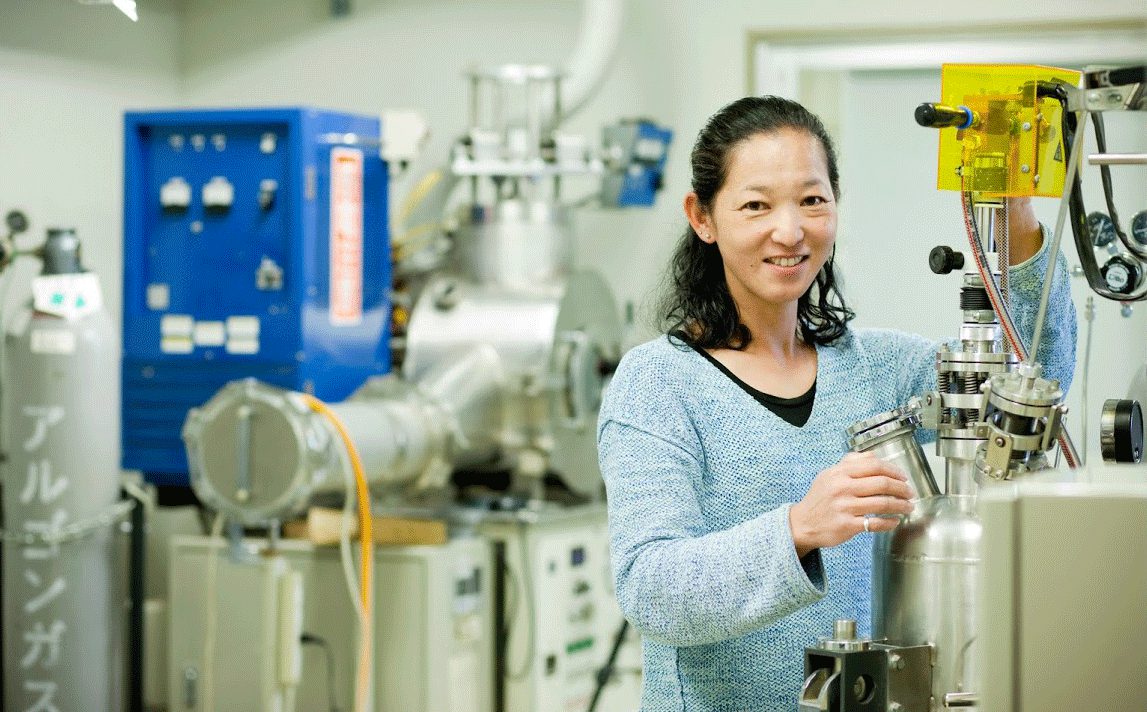
Electrical devices around us are becoming smaller and more sophisticated. These technological innovations that make our lives more convenient are based on the research progress study of the materials that are used in electronic devices. A research team led by Professor Rie Umetsu at Institute for Materials Research, Tohoku University has succeeded in the world’ s first direct observation of the electronic state of “half-metal,” which is expected to become next-generation materials for the realization of revolutionary devices. Theoretically, it is possible to create half-metals, but the performance has not been fully achieved yet. This is a big step toward realizing it. We spoke with Dr. Umetsu about the current status of spintronics research.
── First of all, please tell me what spintronics is?
Dr. Umetsu(title omitted below) As the name implies, many of the functions of electronic devices built into electrical and industrial products are based on the tiny “electrons” of the atoms that make up the materials. Electrons are electrically charged particles that are constantly spinning. In other words, electrons have information about the amount of electricity (electrical charge) and information about the amount of an angular momentum (spin) . A semiconductor is a material that controls and utilizes the electric charge, and a magnetic material is a material that utilizes the spin.
Until recently, these two properties have been used separately. If it were possible to use both electric charge and spin in a single material, the performance of electronic devices made from that material would skyrocket. The research field of creating such a material is called “spintronics. “ This name comes from the combination of electronics (charge) and magnetic engineering (spin).
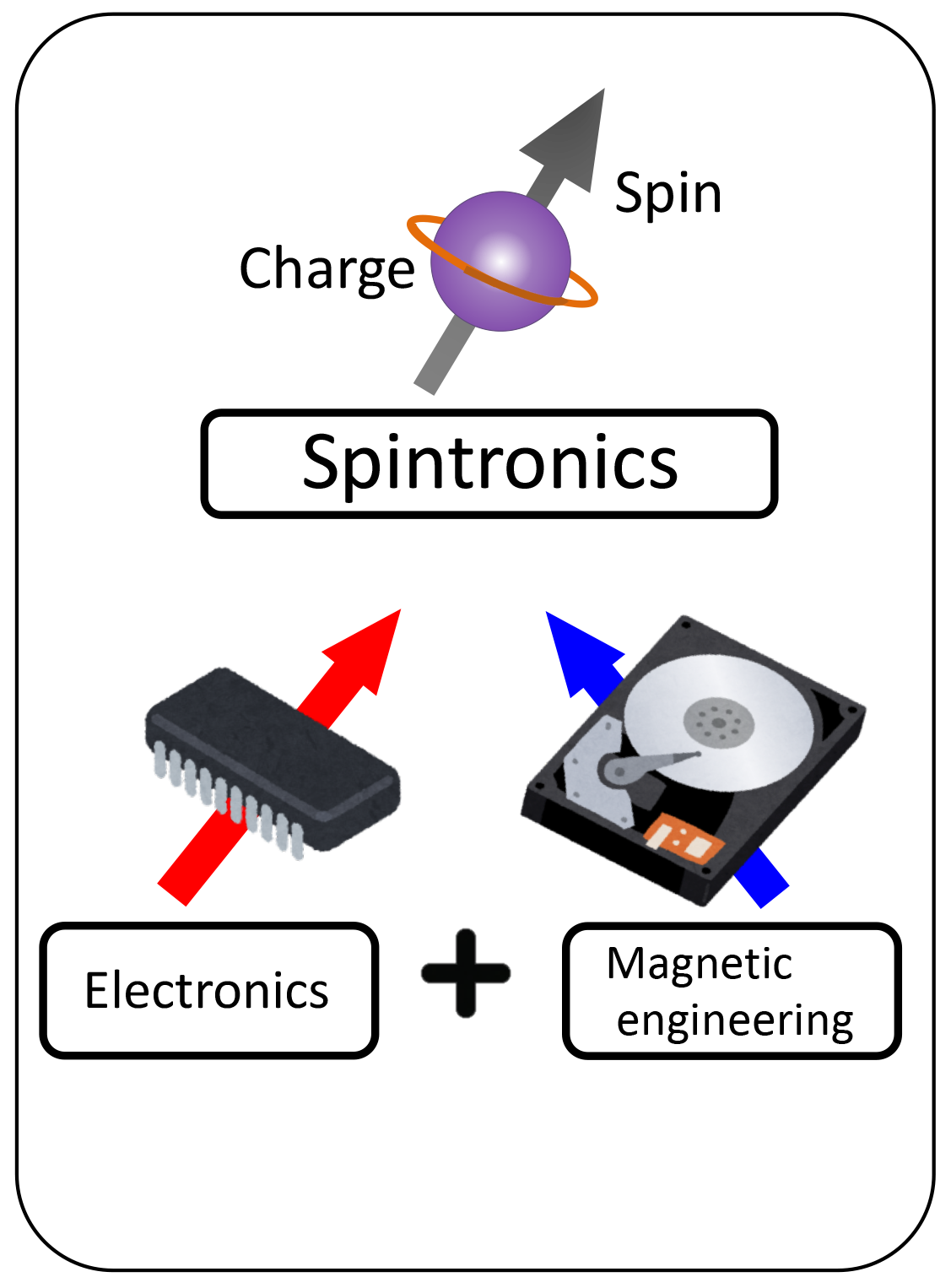
── When spintronics technology, which controls and utilizes the charge and spin of electrons, is established, it will revolutionize the technology surrounding our daily lives.
Umetsu A familiar example is the computer. Right now, it takes a certain amount of time to start up a computer, but if spintronics is implemented, we will be able to create high-performance hard disk drives that start up in a flash and have a much larger storage capacity. I also believe that it will also save energy as it will be possible to access them with low energy. In the medical field, we may be able to create devices that are highly sensitive enough to pick up the faintest signals emitted by the human body. We may be able to see detailed brain wave changes or the condition of a fetus.
── ”Half-metal” is the material that is expected to make spintronics a reality. What makes it half-metal in the first place? It has an interesting name.
Umetsu Half-metal is an artificially created alloy that combines the properties of both a magnetic metal and a semiconductor. It is called a half-metal because half of their electronic states have metallic. Since spin information can be injected into a semiconductor, which controls electrical charge information, it is expected to be able to perform functions that integrate magnetism and semiconductors.
For example, I am currently experimenting with a material called “Heusler alloy,” which has a certain crystal structure, and is thought to have half-metal properties. Certain metal elements are placed in places X, Y, and Z.
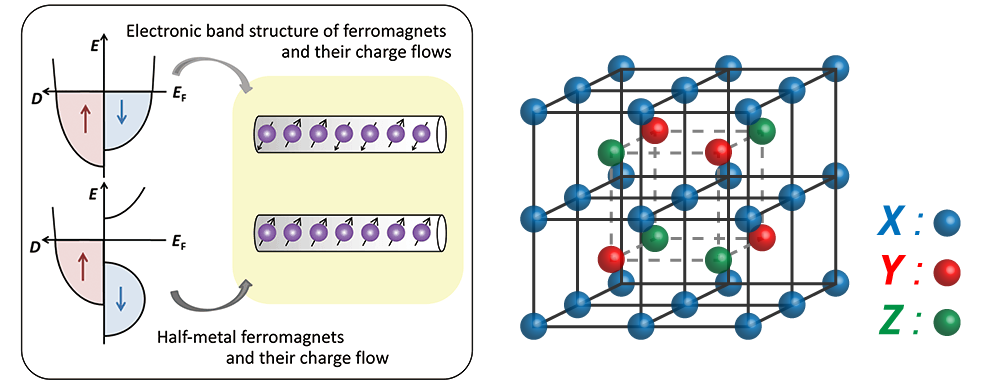
Umetsu Currently, there are many theoretical predictions on how to make half-metal alloys by combining this atom with that atom in this composition. Alloys have been created based on these theories, and researchers around the world are working hard to apply them to devices. However, they have not been very successful. The creation of electronic devices made of half-metal materials with the performance expected from the theory has yet to be realized.
In my opinion, it is necessary to actually see if the produced half-metal candidates really has an effective electronic state in order to find out the reasons why it does not work and how to make it work. The performance of the device is determined by the electronic states, which is why research that directly observes them is so important.
── So how do you observe the state of the electrons?
Umetsu First, we synthesized half-metal materials proposed by theories, measured their physical properties to within the limits of laboratory work, and searched for materials that would be candidates for practical use. However, this was not enough to prove that the material had typical electronic states of half-metal, so we decided to use special light to directly observe the electronic states. We used a cutting-edge experimental technique called Resonant Inelastic X-ray Scattering (RIXS). We conducted the experiment at SPring-8, a large synchrotron radiation facility in Hyogo Prefecture.
To put it simply, RIXS is a method for examining occupied electronic states by measuring an X-ray emission during the relaxation process from one of the occupied electronic state to an empty core state, formed by excitation of an electron of the state into the empty valence state level by absorption of the incoming X-ray
. Using this method, we observed two Heusler alloys, which were candidates for half-metals, and found that they have the electronic states as proposed in the theory, which we published in our paper. By the way, no one has yet solidly observed the electronic state of half-metals in RIXS.
── That’s a world first! Why do you think it could have been accomplished?
Umetsu In the first place, there is a small researcher population who try to measure electronic states. Spintronics is a field that is being actively researched and developed all over the world, but while there are many researchers who are doing engineering applied research for device implementation and theoretical calculations, we still don’t have enough researchers who investigate the basic physicochemical properties of material to connect these two areas.
The engineering approach and the scientific approach have very different concepts when preparing samples for measurement. Researchers who are focused on applications to electronic devices make samples using thin films, which directly relate to implementation. On the other hand, I wanted to know the basic physical properties, so I experimented with lumpy samples called “bulk,” which were crystallized in a state closer to the natural equilibrium state. I think the difference was there, and that is why I was able to make good measurements.
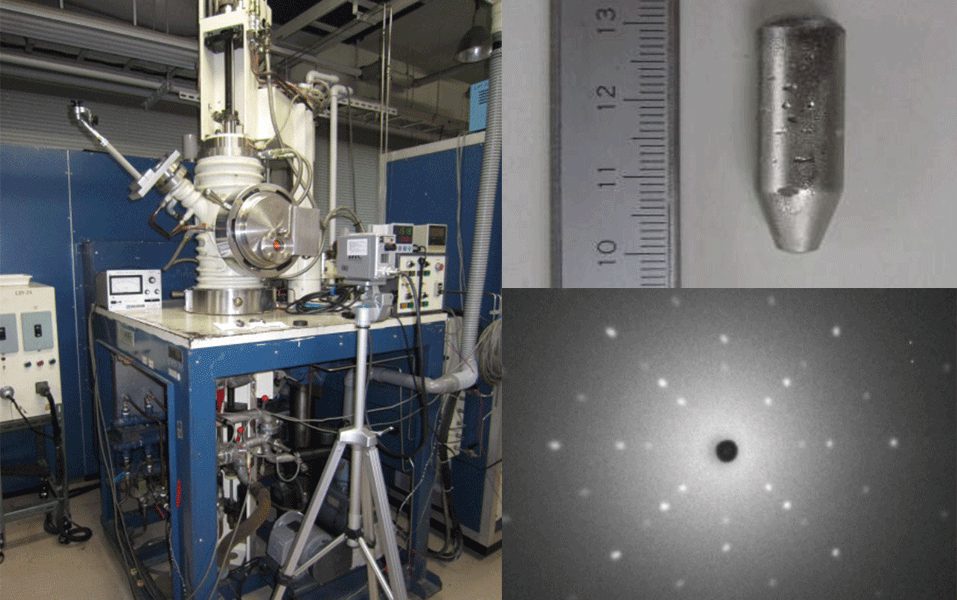
and Laue pattern reflecting its crystal structure (bottom right)
Umetsu However, I think the most important reason for my success is that I had a lot of support from many people. The Institute for Materials Research at Tohoku University, to which I belong, has many experts who have a great deal of knowledge and experience in crystallization, and I also received help from people who know a lot about measurement and analysis at SPring-8. There are limits to what one person can do. It has been more than 15 years since I started this research, but perhaps it was the time I needed to find people who would be interested and willing to work with me.
When I was younger, I used to feel embarrassed to ask people questions, thinking that I should learn a little more before asking so that people wouldn’t think that I knew so little. But once I had babies and started raising them, I was no longer embarrassed to ask people because I didn’t have time. It’ s not always the case that I get an answer right after I ask a question, but I get hints from casual conversations or suggestions for alternative methods.
As I talked more, others gradually got to know what I wanted to do and the community expanded. I also got help from unexpected directions. In that sense, I think it’s important to be aware of what you want to do and what the obstacles are, and to keep sharing them with those around you. If you don’t, the people around you won’t be able to help you.
── How will the results of your research contribute to the field of spintronics?
Umetsu Now that we have established one method for observing the electronic state of half-metals, we will be able to collect data on other half-metal candidates. By sharing these data with theoretical researchers, we can make a calculation on what material would be best to create a half-metal with even higher performance. I believe that only a combination of both the accumulation of humble experiments and theoretical predictions will pave the way for practical applications.
A synchrotron radiation facility will be built on the campus of Tohoku University in the near future. It will be a medium-sized synchrotron radiation facility, not as large as SPring-8, and will generate radiations with more suitable wavelengths for my study. If we can conduct experiments close by, our research will move forward greatly. The facility is scheduled to be in operation in a couple of years, but I would like to prepare more candidate materials and be ready by then.
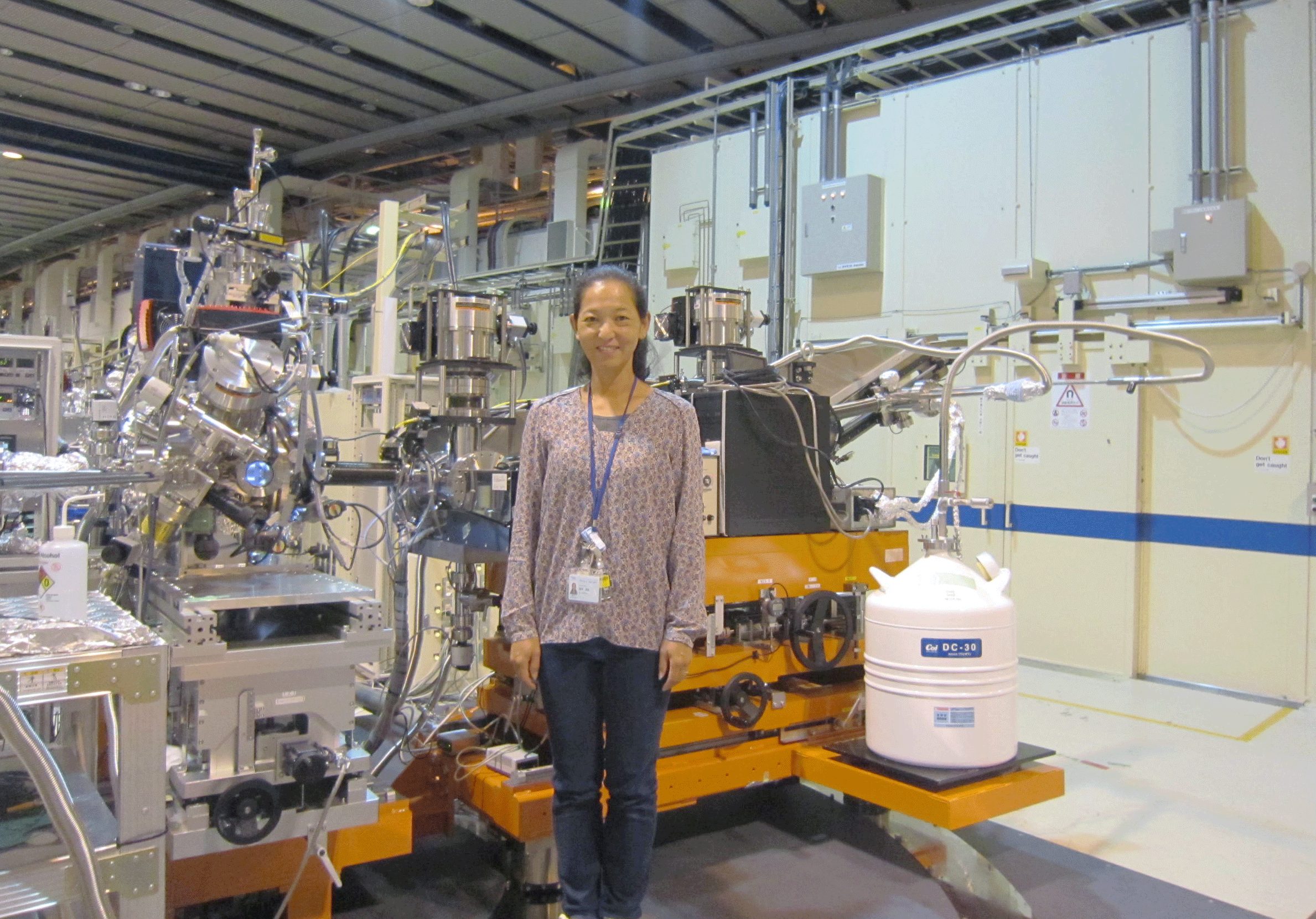
── After earning your master’s degree in physics at the Graduate School of Science, you left the research for a while.
Umetsu At that time, I somehow thought that I was supposed to get a job after I finished my master’s degree, so I started looking for a job. I went to job fairs, but felt that doing research at a company was not for me. I thought about it a lot and decided to try something different. So I started studying clinical psychology, but my mother became ill and I had to go back to my parents’ house in Sendai to concentrate on nursing and housework. After that, I entered the doctoral program at Tohoku University again where I was able to make use of what I had learned up to my master’s degree, and studied material properties, which led to my current research.
── Did you come back to the field of physics because you loved it so much?
Umetsu I entered the Department of Physics in the Faculty of Science and got my master’s degree there, which is something I was able to do because I had always been interested in it. I thought it would be a shame not to make use of the advantage I had over those who studied this area from the beginning. I realized that I should return to the path that I had chosen for myself and continue research.
── You got married after receiving your PhD, and had babies while continuing your research. It must have been very challenging to engage in research while raising children.
Umetsu In my 20s, I was working hard to get my doctorate degree and time flew by. Then I got married and had three babies between the age of 30 and 35, so I felt like I had little babies around me all the time in my 30s.
It must have been tough while raising children, but I don’t actually remember much about it. I was beside myself and just kept going. I didn’t even think about what would happen to my research if I had a baby. It is a little regretful that I missed the opportunity to do research overseas, but I am sure I will do it someday.
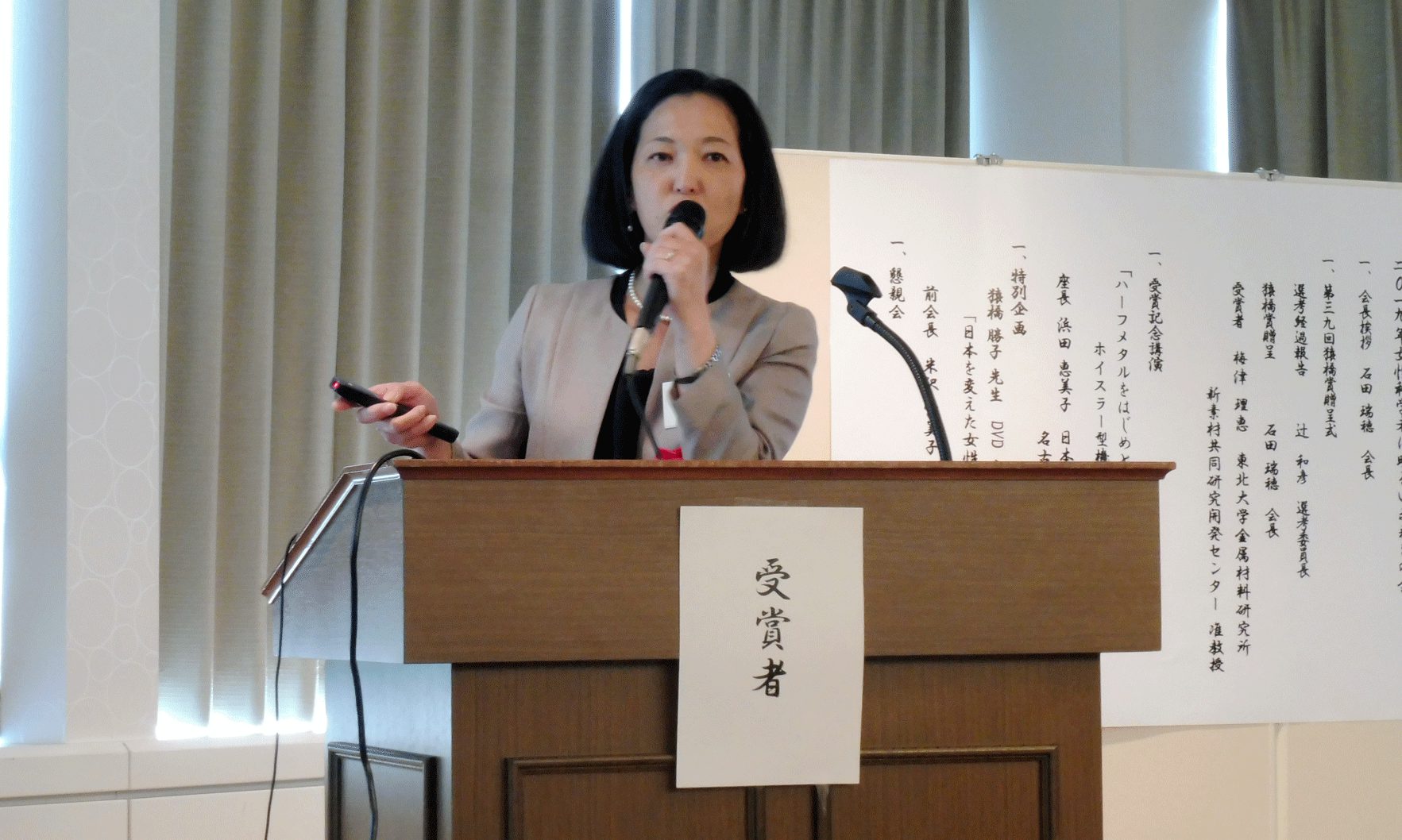
── You were awarded the 2019 Saruhashi Prize, which honors outstanding Japanese female scientists. You were also listed for The Asian Scientist 100 by the science and technology magazine “Asian Scientist” in 2020. We are looking forward to your future activities, Dr. Umetsu. Thank you very much for your time today!
| By My Side |
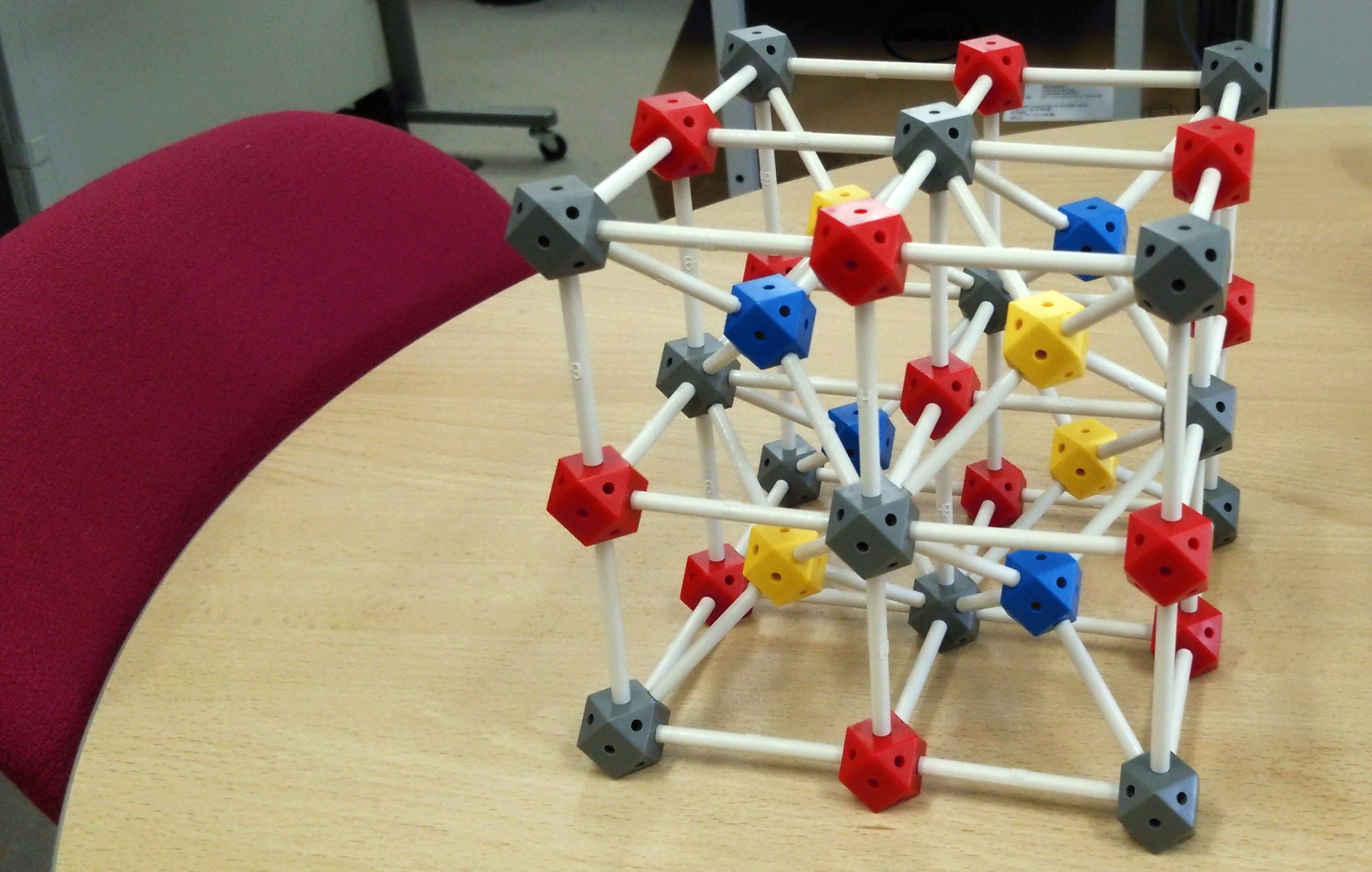 Molecular model kit of the crystal structure of a Heusler alloy “It’s important to know where to place each element in order to get close to the ideal half-metal. I keep this model beside my desk and revolve it around as I think about my experiments.” |
|---|---|
| Unchosen Path | Tennis coach Perhaps because of my father’s influence, who was a sportsman and national athlete, I loved working out, and when in elementary school, I even thought I wanted to be an athlete in the future. I used to work as a part-time coach when I was a student. ”However, I could not become a nationally competitive athlete, so I gave up on becoming an athlete. I was still thinking seriously about going into Physical Education so that I could support athletes scientifically, but I also found studying physics interesting and ended up going into the Sciences.” |
Rie Umetsu
Professor at Institute for Materials Research Cooperative Research and Development Center for Advanced Materials. Born in Sendai, Miyagi in 1970. Dr. Rie Umetsu received her B.S. in Physics from Nara Women’s University Faculty of Science and MSc in Physics from Nara Women’s University Graduate School, Division of Natural Science. After graduation, she studied clinical psychology as a research student at the Department of Psychiatry, Nara Medical University, but returned to Sendai to take care of her mother’s illness. She then enrolled in a doctoral program at Tohoku University Graduate School, Division of Engineering, where she studied materials science and obtained her PhD in engineering in 2000. Dr. Umetsu served as a JSPS Research Fellow PD and other positions followed by the career at Tohoku University as Assistant Professor and Associate Professor at Institute for Materials Research, and has been in her current position since 2020.
Interview and original artile by Izumi Kanchiku (team Pascal)
*The interview was conducted online.
Photos and figures provided by Dr. Umetsu
